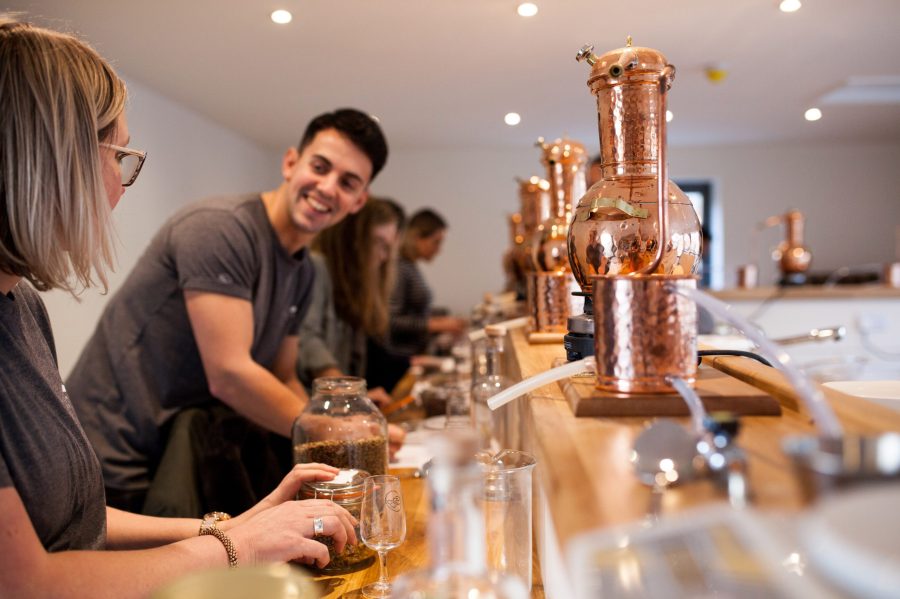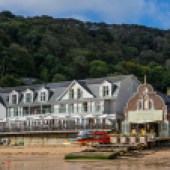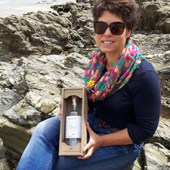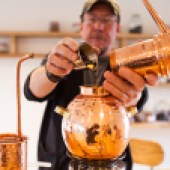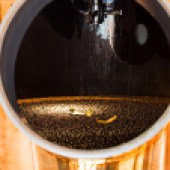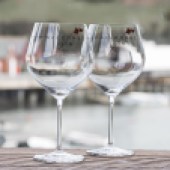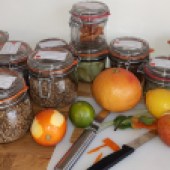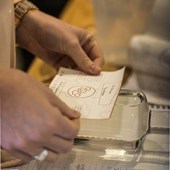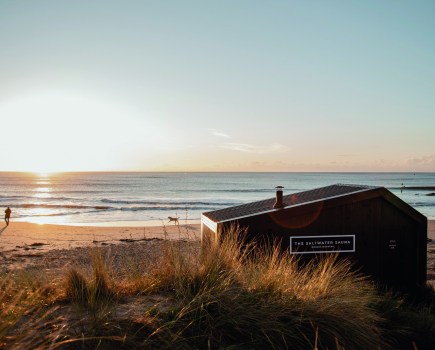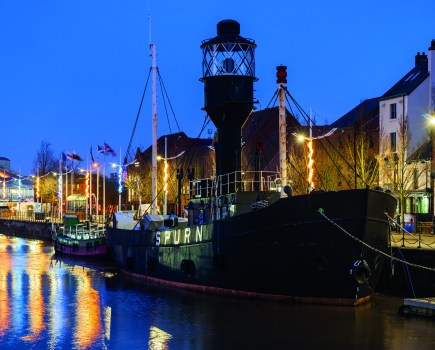Always wanted to make your own gin? Salcombe Distilling Co on the South coast of Devon runs a gin school where you learn all about the process of making the spirit, and create your own bespoke gin to take home
Words: Nicola Smith Photographs: Rachel Hoile
Gin is synonymous with the sea. The tipple has long been a staple on Navy ships, and rumour has it that in the 18th century the Royal Navy legislated that a minimum quantity of gin had to be on board every vessel… Times may have changed, but gin still plays a role in our coastal lifestyles, and demand has never been greater, with the number of gin distilleries in Britain doubling between 2010 and 2016.
One such is Salcombe Distilling Co, Devon, its copper stills gleaming in the sunshine, the sea lapping at its feet. It is the brainchild of Angus Lugsdin and Howard Davies, former sailing instructors who met in Salcombe in the 1990s before joining forces to open the distillery last November. Their Start Point Salcombe Gin won Gold at the World Gin Awards in 2017, and in March of the same year they opened a gin school, where visitors choose botanicals before using a copper mini-still to make their very own gin. In the name of research, I decided to give it a try.
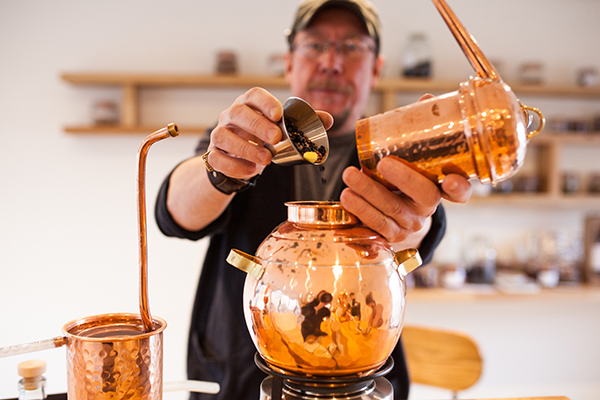
2PM DISTILLERY TOUR
We start with a tour to see how this award-winning product is made. This is a craft distillery, comprising a huge bespoke copper still made in Germany. It is an experience akin to Willy Wonka for gin drinkers. A giant copper flask is fed by a copper funnel, with all manner of silver piping and some very impressive dials. Angus tells me it holds 450 litres, capable of producing 600 bottles of gin per run, with each run taking about nine hours.
Start Point is a London Dry gin – a style where botanicals are added during the distilling process rather than later as flavourings. Angus explains that they like to call it ‘Devon Dry’: ‘Like London Dry, but with more sunshine!’ The process of making Start Point begins with a neutral English wheat spirit, to which pure water from the wilds of Dartmoor National Park, is added. (As Angus says, ‘Gin is vodka with attitude’). This dilutes the spirit to the required strength of about 50 per cent ABV (alcohol by volume).
The rich flavours of the ‘tails’ – the last of the distillate coming off the still from the previous run – are then incorporated, before 13 carefully selected botanicals are added. These begin with juniper, which gives gin its distinctive flavour, as well as a mix of fresh citrus and spices including grapefruits, lemons and limes. The still is heated to 100˚C. Once the methanol has burnt off, the vapours rise up into the copper catalyser, and any impurities are extracted before the vapours are converted into liquid in the condenser. Once the powerfully flavoured ‘heads’ (the early parts of the gin) have run off, the ‘heart’ is put in a blending tank for two days, and more water is added to ensure the gin meets the EU legal minimum alcohol level, at least 37.5 per cent ABV. I taste a tiny bit of the heads and it’s mind-blowingly strong, but the potential is there. The final product is bottled in a nearby warehouse at a secret location.
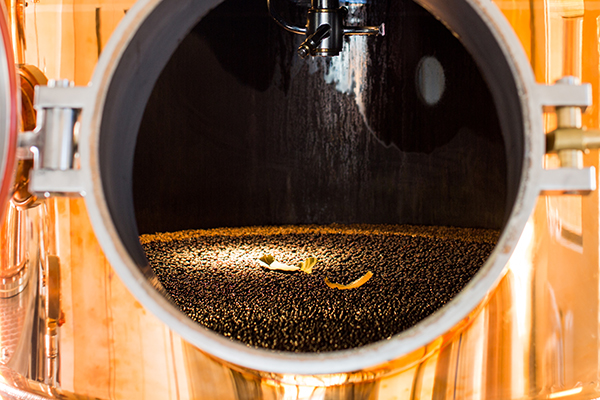
3PM BACK TO SCHOOL
We go into the light and airy gin school where 10 workstations are each equipped with a bijou 2.5 litre copper still – enough to make one bottle of gin. The stills are pre-filled with 425ml neutral grain spirit, and we are tasked with adding the botanicals to suit our taste. The walls of the room are lined with shelves of small preserve jars, all bursting with a tantalising array of botanicals, as well as a selection of fresh grapefruit, lime, lemon, orange and apple. Thyme and mint plants line the window sill.
As the still heats up, we begin by weighing out the staple ingredient, juniper berries, as well as coriander seeds, another of the core flavours often used. Angus advises us that 10-12 is the average number of botanicals used in commercial gins, and a good starting point is to decide what overall flavour you want – floral, spicy, woody or citrusy, etc. He warns us to go easy on certain botanicals such as anise which, if used too enthusiastically can inadvertently create a bottle of ouzo…
I aim for a spicy gin with a hint of citrus, choosing ginger, cinnamon, cardamom, orange, grapefruit, basil, rhubarb root and coriander. Tiny quantities are needed to make one bottle, with just a pinch of ginger and a centimetre of orange peel, for example. These are added to the still and the heat turned up to full. We position a beaker beneath the spout and about 10 minutes later the spirit starts to drip out at a steady rate. As we watch, we sip a Start Point gin and tonic. It all feels very civilised indeed.

4PM HEADS AND HEARTS
Once we’ve collected 25mm of the spirit we make a ‘heads’ cut in a tall glass, disposing of this and capturing what follows – the ‘heart’ – for later consumption. By holding my finger under the liquid periodically as it drips out, I can taste the gradual change as the various botanicals begin to infuse, with the citrus notes leading the way, followed by the juniper and spice. It is an art to allow it to boil for the right time – do it too fast and some of the flavours can be lost. We turn it down to simmer away.
It takes about an hour to collect 425ml of gin. At this point Angus uses the density meter to check the gin’s ABV. My concoction comes in at 78.3 per cent. Water is added to make it up to 70cl (a bottle) before taking another reading, which comes in at 44 per cent ABV – the same as Start Point.
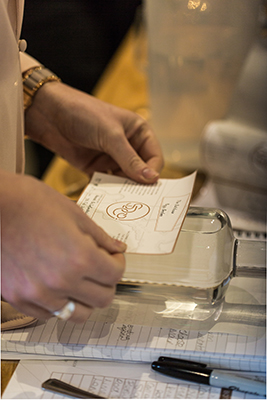
5PM THE END RESULT
We try a small neat sample of our creations and I’m pleasantly surprised by mine. It has the spiciness I’d hoped for and is eminently drinkable. After choosing a name for our gin – Virgin on Tipsy for me – Angus bottles it and prints personalised labels. We apply these to the bottles and stick a ‘duty paid’ sticker to the back before being presented with our gin in a wooden box. We head back across the courtyard to the main distillery bar. A G&T made from our own creations in the evening sun makes the perfect end to a perfect afternoon.
For more food and drink, click here or pick up a copy of the magazine.
ASK THE PRO
Salcombe Gin co-founder Angus Lugsdin says: ‘Howard and I used to teach sailing with the Island Cruising Club in the 1990s. After work, we’d often relax with a G&T, so it’s fitting that, 20 years on, we have opened our distillery on the site of the old ICC boat store. In the 1800s locally built ships called Salcombe Fruiters used to bring in citrus fruit and spices from the Azores, Mediterranean and West Indies, which is where we source many botanicals now. And Start Point gin is named after the nearby lighthouse. We’re drawing on a lot of history.’
HOW DO I BOOK?
An afternoon at Salcombe Distilling Co Gin School is £110 pp, or £160 for a couple sharing. The school runs classes Tuesday-Saturdays all year. The bar is open from 10am Mon-Sat and 12pm on Sunday. Visit salcombegin.com/gin-school or call 01548 288180.
HOW TO GET THERE
Salcombe Distilling Co is situated in The Boathouse, Island Street. Shadycombe Car Park is a five-minute walk away.
WHERE TO STAY

